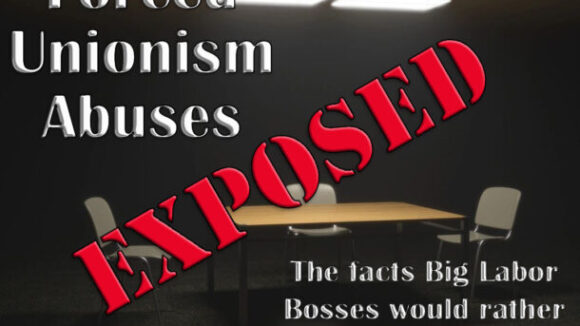Biden Bureaucrats Move to Gut Constitutional Right to Work Protections For Federal Employees
When Right to Work advocates made their first valiant, although diffuse, efforts to stop the spread of government-imposed compulsory union membership…
According to U.S. Commerce Department data released on June 10, last year a record 47.9% of the entire U.S. manufacturing output, measured in current dollars, occurred in states that had prohibited compulsory union dues and fees. (A link to the entire release may be found at the end of this post.)
As recently as 2004, just 36.6% of the manufacturing production in the U.S. occurred in Right to Work states.
And in the wake of Wisconsin’s adoption of the 25th state Right to Work law this spring, it now seems inevitable that, when the Commerce Department issues its report next June on annual state manufacturing GDP for 2015, it will show a majority of the nation’s factory output emanating from Right to Work states. (In 2014, Wisconsin was the source of 2.6% of all U.S. manufacturing.)
When it finally becomes official that most of American’s manufacturing production occurs in states that prohibit compulsory union dues and fees, it will simply be a landmark in a very long process. In 1984, the year Ronald Reagan was elected to his second presidential term, just 28.2% of the total current-dollar value of U.S. factory output came out of Right to Work states, then 20 in number. By 1994, halfway through Bill Clinton’s first term in the White House, the Right to Work share of U.S. manufacturing GDP had risen to 32.1%.
Right to Work’s gradual rise to dominance in domestic manufacturing output and employment is a consequence in part of the adoption of Right to Work laws in Idaho, Oklahoma, Indiana, Michigan and Wisconsin since 1984. But it is also a result of faster growth in Right to Work states.
From 2004 to 2014, for example, the 22 states that had Right to Work laws on the books for the whole decade experienced overall real factory output growth (in chained 2009 dollars) more than half again as great, in percentage terms, as the 26 states that lacked Right to Work protections throughout that period.
And counterproductive work rules imposed and perpetuated for decades by Big Labor bosses wielding forced-unionism privileges are obviously a key factor behind the state manufacturing GDP data. In industry after industry, union bosses have negotiated contracts requiring rigid job classifications that waste time and money, ultimately to the detriment of workers’ paychecks and job security.
Starting in the late 1980’s, it became increasingly apparent that companies under rigid union monopoly-bargaining rules like the Big Three automakers were being crushed by union-free domestic competition, which is very often based in Right to Work states.
Over the past few years, manufacturing union bosses have finally responded by grudgingly allowing some reforms of work rules and inefficient health-insurance and pension systems. But for the most part it has been too little, too late.
The highly productive jobs located in Right to Work states in the Southern, Rocky Mountains and Great Plains regions, and now the Great Lakes region as well, are enabling millions of workers to provide well for themselves and their families, especially when Right to Work states’ low aggregate cost of living compared to that of forced unionism states is taken into account.
But instead of supporting worker freedom and the opportunities it provides, a number of forced-unionism apologists have actually suggested in recent years that manufacturing is no longer important because it currently provides a significantly smaller share of American (and global) jobs than in the past.
The fact is, the manufacturing sector remains a vital component of our national prosperity. As Commerce Department data show, it is a sector that today represents roughly 14% of the entire private economy. And Right to Work states have played an absolutely critical role in enabling this sector to continue growing and prospering.

Gross Domestic Product by State, Advance 2014 and Revised 1997-2013

When Right to Work advocates made their first valiant, although diffuse, efforts to stop the spread of government-imposed compulsory union membership…

Years ago, the ILA was identified by the President’s Commission on Organized Crime as one of a handful of international unions with “histories of control or influence by organized crime.”...

Flight Attendant Triumphs Over TWU Union and Southwest in Suit About Illegal Firing; Jury Awards $5.1 Million in Damages TWU union…